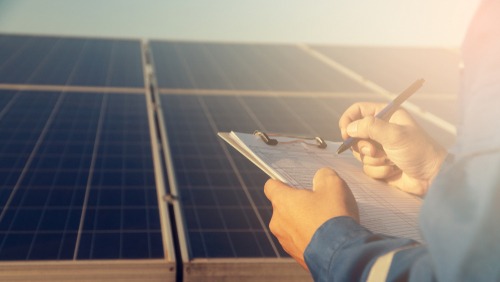Otter Tail Power releases Integrated Resource Plan for Minnesota, SD, and ND

Otter Tail Power Company submitted its Integrated Resource Plan (IRP) to regulatory commissions in each of the three states it serves — Minnesota, North Dakota, and South Dakota.
“Planning a diverse mix of energy resources to reliably and economically serve our customers over the next 15 years is extremely complex,” President Tim Rogelstad said. “I am proud of our collaborative team for submitting a plan that enhances our ability to ensure our customers have the electricity they need, when they need it, at an affordable price, in an environmentally responsible way.”
In the plan, Otter Tail officials requested the authority to add dual fuel capability at its Astoria Station in South Dakota and add 150 megawatts of solar at a location yet to be determined. Further, the company outlined in the plan that it will start the withdrawal process from its 35 percent ownership interest in coal-fired Coyote Station in North Dakota in 2028.
“As we maintain and enhance resiliency, it’s our accountability to customers to pursue economical generation resources that give us greater control over whether or not to dispatch resources based on market conditions,” Rogelstad said. “Coyote Station has been a safe, reliable, cost-effective resource for our customers for 40 years. For that, we are grateful. Because more flexible and economical resource options are available as we look forward, Otter Tail Power Company is seeking to withdraw from our 35 percent ownership interest in the facility. It is important to understand this is not a decision to retire Coyote Station, which is a co-owned facility. Coyote Station’s future is not ours alone to determine.”
Rogelstad added that it will likely be a couple of years before the company knows the path of any withdrawal from plant ownership and operation. In the meantime, the plant will continue to operate.
“While each of the owners is uniquely positioned to serve its customers—in terms of the amount of energy its customers need and the required production capacity of its generation resources—our shared priorities are to continue serving customers with reliable, low-cost electricity.,” he added.
By 2023, Rogelstad said Otter Tail customers will receive approximately 35 percent of their energy from renewable resources. The goal is to reduce carbon emissions from generation resources the company owns by approximately 50 percent from 2005 levels by 2025 and 97 percent by 2050.
“As we transition to a cleaner energy future, we’re keeping residential rates among the lowest in the nation,” Rogelstad said. “This is part of our mission and our ongoing commitment to our customers.”
